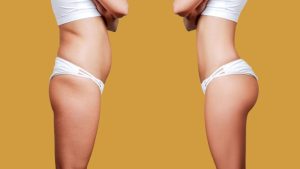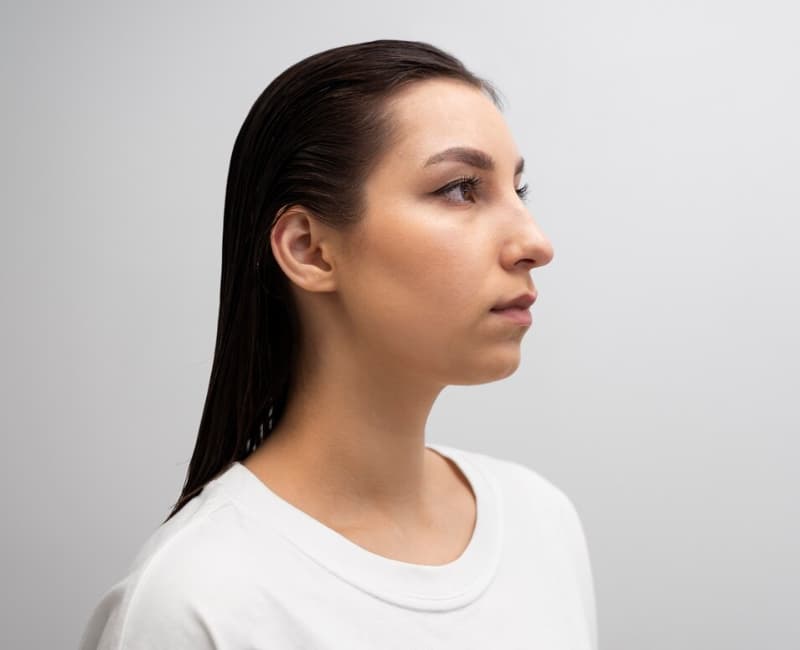Introduction
The contour of your facial profile is significantly influenced by the structure of your nose. A sizable or prominent nose can be regarded as a symbol of beauty and distinction. Cleopatra, a celebrated and legendary beauty, notably possessed a nose of considerable length and size, a feature that continues to be a topic of discussion.
However, some individuals perceive a prominent nose as an undesirable trait. If you’re dissatisfied with the appearance of your nose, you may be enticed by home remedies and exercises that promise to refine, streamline, and reduce its size. Continue reading to discover effective ways to create the illusion of a smaller-looking nose.
How to Lose Nose Fat?
Avamedi offers multiple other services such as Rhinoplasty in Iran and Rhinoplasty in Turkey
Click (Speed Up Your Nasal Tip Surgery Recovery Time) to read the article.
Numerous online rumors circulate regarding methods to reduce the size of your nose. Some websites propose the repeated application of ice to achieve nose shrinkage, but this claim lacks scientific support.
Other suggestions involve applying pastes containing garlic extract, toothpaste, apple cider vinegar, ginger powder, or anti-inflammatory ingredients to eliminate nose bumps. However, there is no substantiated evidence to validate the effectiveness of these remedies.
Certain individuals insist that specific facial exercises and expressions can make your nose appear smaller, but the structural shape of your face is primarily determined by collagen, not muscles or fat. As the nose is composed of cartilage, toning or strengthening facial muscles is unlikely to visibly alter its size.
There are even DIY injection products and facial molds purported to reshape nose bones, but many lack approval from the Food and Drug Administration. Overall, there is a significant lack of evidence to support the efficacy of these remedies.
Nose Fat
The human nose does not typically contain a significant amount of fat. The structure of the nose is primarily composed of bone, cartilage, and connective tissue. However, some people may have a thicker nasal tip or a wider nasal bridge due to variations in tissue density and cartilage distribution. If you have concerns about the appearance of your nose, it’s recommended to consult with a qualified medical professional, such as a plastic surgeon or otolaryngologist, for personalized advice.
How to Lose Nose Fat with Non-surgical Remedies
Click (Guide to Bulbous Nose Tip Surgery Recovery) to read the article.
Attempting to use unproven home remedies to actually reduce the size of your nose is unlikely to yield results. However, there are alternative strategies, such as makeup techniques like nose contouring, that can create the illusion of a smaller nose. Numerous tutorial videos on platforms like YouTube demonstrate these methods:
- Use a bronzer that is two shades darker than your skin tone to outline both sides of your nose.
- Utilize a matte highlighter to trace the narrow outline of your nose, drawing attention to it.
- Employ a beauty blender to enhance the shadows and highlights, refining the overall effect.
While it may require some practice, many individuals appreciate the results achieved through this makeup technique. Additionally, you may explore nonsurgical rhinoplasty, a procedure involving the injection of temporary fillers like Juvederm or Restylane into the structure of the nose. These fillers can temporarily address issues such as bumps or asymmetries, with effects lasting up to six months.
How to Reduce Nose Size Naturally without Surgery?
The sole acknowledged and successful method for reducing the size of your nose is a cosmetic surgical intervention called rhinoplasty.
For individuals hesitant to undergo an invasive surgical approach, an alternative option is a non-surgical rhinoplasty, which entails the injection of dermal fillers. However, it’s important to note that this procedure is primarily effective for addressing irregularities in the nose and is not specifically designed to diminish its overall size.
How to Lose Nose Fat with Surgical Remedies
If you’re contemplating a surgical procedure to lose nose fat or reduce the size of your nose, you might be familiar with the term rhinoplasty. During this cosmetic surgery, a consultation with a surgeon will involve discussing the desired shape for your nose. Subsequently, you’ll undergo general anesthesia, allowing the surgeon to remove cartilage and tissue for the reconstruction of your nose.
Nose reshaping surgeries are more prevalent than one might assume, with over 200,000 such procedures performed annually. According to the American Society of Plastic Surgeons, rhinoplasty ranks as the third most popular type of cosmetic surgery. It’s important to note that these surgeries are typically not covered by insurance.
Am I Suitable for Rhinoplasty?
Avamedi offers multiple other services such as revision rhinoplasty in Iran.
Click (How to get rid of bulbous nose tip naturally?) to read the article.
Determining your suitability for rhinoplasty, like any surgical procedure, involves consideration of several factors. While an in-depth assessment by a qualified plastic surgeon is the most definitive way to determine eligibility, the following criteria generally indicate that an individual may be a good candidate for rhinoplasty:
-
Physical Health:
- Candidates should be in good overall health to ensure safe surgery and efficient post-operative healing. Chronic health conditions like heart disease or uncontrolled diabetes may impact suitability for the procedure.
-
Nasal Maturation:
- It is generally advisable for patients to wait until their nose has reached its adult size before considering rhinoplasty. This typically occurs around age 16 for girls and slightly later for boys.
-
Reasonable Expectations:
- A suitable candidate understands that while rhinoplasty can significantly enhance appearance and/or improve nasal function, it is not about achieving perfection. The goal is to enhance the nose’s appearance and function while maintaining a natural look that complements other facial features.
-
Non-Smokers:
- Smoking can interfere with healing and increase the risk of complications. Therefore, candidates should ideally be non-smokers or willing to quit smoking well in advance of the surgery and throughout the recovery period.
-
Specific Nasal Concerns:
- Candidates often have particular concerns about their noses that they wish to address. These concerns can be functional, such as difficulty breathing due to a deviated septum, or cosmetic, such as a bump on the nasal bridge, a bulbous tip, or an asymmetrical nose.
Does Losing Weight Make Your Nose Smaller
Click (What are Middle Eastern nose features?) to read the article.
Losing weight can affect the appearance of your face, including your nose, but the extent of the change varies among individuals. When you lose weight, especially from the face, it can lead to a reduction in overall facial volume, which may make facial features, including the nose, appear more prominent or defined.
However, the size and shape of your nose are primarily determined by genetics and bone structure. Losing weight may not necessarily result in a significant reduction in the actual size of your nose, as the nose is primarily composed of cartilage and bone, not fat.
Factors such as water retention, bloating, and changes in skin elasticity can also influence the perceived size of facial features. In some cases, weight loss can lead to a more sculpted and defined facial appearance, which may create the illusion of a smaller nose.
What are the Benefits of Rhinoplasty to Lose Nose Fat?
Rhinoplasty, commonly known as a nose job, is a surgical procedure that focuses on reshaping and altering the size of the nose. It’s important to note that rhinoplasty is not specifically intended for “losing nose fat” because the nose doesn’t contain fat deposits like some other areas of the body. Instead, rhinoplasty addresses the underlying bone and cartilage structure, as well as the skin covering the nose.
Here are some potential benefits of rhinoplasty:
-
Improved Aesthetic Appearance:
- Rhinoplasty can enhance the overall aesthetic harmony of the face by addressing concerns such as a prominent hump on the bridge of the nose, a wide or asymmetrical nose, or a drooping nasal tip.
-
Enhanced Facial Proportions:
- By adjusting the size and shape of the nose, rhinoplasty can help create better facial proportions, bringing attention to other facial features.
-
Increased Self-Confidence:
- Many individuals seek rhinoplasty to address insecurities related to the appearance of their nose. A successful procedure can boost self-esteem and confidence.
-
Correction of Breathing Issues:
- Functional rhinoplasty may be performed to improve breathing difficulties resulting from structural issues within the nose, such as a deviated septum.
-
Correction of Birth Defects or Trauma:
- Rhinoplasty can correct congenital deformities or address damage caused by accidents or injuries.
It’s important to have realistic expectations about the outcomes of rhinoplasty and to consult with a qualified plastic surgeon who can assess your specific concerns and provide professional advice. While rhinoplasty can bring about positive changes to the appearance of the nose, it’s not a method for losing fat, as the nose doesn’t contain significant fat deposits. The procedure involves reshaping the underlying structures of the nose to achieve the desired aesthetic and functional results.
Conclusion
In conclusion, losing nose fat is not a targeted or isolated process, as fat reduction in specific areas of the body, including the nose, is challenging. The nose is composed of cartilage, bone, and a thin layer of skin, making it unlikely to accumulate significant fat deposits. Instead, overall body fat reduction through a combination of a healthy diet, regular exercise, and lifestyle changes is the most effective approach.
It’s important to note that genetics also play a role in the distribution of fat in the body, and some individuals may naturally have a different nose shape. Therefore, focusing on overall health and well-being, rather than attempting to target specific areas, is a more realistic and sustainable approach to achieving a desired physique. Always consult with healthcare professionals or certified fitness experts before starting any diet or exercise program to ensure it is safe and tailored to individual needs.
Source: healthline
FAQ about Lose Nose Fat
How can I reduce my nose fat?
Permanent reduction in nose size can only be achieved through surgical means, while the use of makeup can create the illusion of a smaller nose. It is crucial to exercise caution regarding unverified home remedies such as apple cider vinegar and self-administered injections. The contour of your face is significantly influenced by the form of your nose.
Can exercise reduce nose size?
Regular exercise is beneficial for both your overall health and skin, contributing to the prevention of premature sagging in the nose area. However, it’s important to note that the extent of reshaping achieved through exercise is minimal.
Are small noses attractive?
Presently, numerous global beauty standards continue to emphasize the desirability of smaller noses. In certain cultures, a diminutive nose is regarded as a symbol of beauty and achievement. Women with larger noses may experience societal pressure to adhere to these ideals, leading some to contemplate surgical interventions to modify the appearance of their noses.
Can a fat nose become thin?
Is it possible to naturally reduce the size of your nose? Permanently altering the nose’s size can only be achieved through surgery. The shape of the nose is determined by nasal cartilage and bone, and unlike muscles that can be influenced by exercise, the reshaping of nasal cartilage requires a rhinoplasty surgery.























